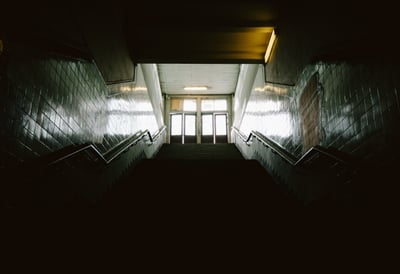5 Tools that Will Make Your School a Safer Place
 Schools should be the safest places on the planet. Yet, during a one-month period, almost 6 percent of high school students stayed at home due to feeling unsafe either at school or during the commute to school. Principals and administrators have bullies, out of control parents, angry teens acting out, and other potential threats in the backs of their minds almost constantly. How can you keep your faculty, staff, and students blissfully safe in this age of worry and uncertainty?
Schools should be the safest places on the planet. Yet, during a one-month period, almost 6 percent of high school students stayed at home due to feeling unsafe either at school or during the commute to school. Principals and administrators have bullies, out of control parents, angry teens acting out, and other potential threats in the backs of their minds almost constantly. How can you keep your faculty, staff, and students blissfully safe in this age of worry and uncertainty?
1. Limited Access Entry Points
Limiting access to potential threats goes a long way toward keeping people safe and secure inside school campuses. School security alarm systems should include a means for locking out anyone who can't prove they belong. Allow only one entry point to outsiders, and set it up so that those persons have to be 'buzzed in' by a staff member.
2. Security Cameras
Security cameras do more than just capture what did happen -- they can prevent something from happening. The presence of cameras keeps everyone on their best behavior, because they know they won't be able to hide their actions. Security cameras belong at all access points to the school, as well as in any areas where students tend to congregate, such as near lockers, in busy hallways, in the lunchroom, and in the gym (where many bullying incidents tend to take place.) Also, keep your buses secure with cameras to protect both the students and the bus drivers. These cameras can also protect the school district from legal liabilities related to incidents on buses and campuses.
3. Training Programs for Faculty & Staff
Do your staff and faculty members have the training they need to address small incidents before those problems escalate into larger issues? Do they know how to handle serious problems if they arise? Local law enforcement or private security agencies can provide school safety training. These programs can be immensely helpful both in identifying potential threats and addressing situations as they happen during the normal course of school hours.
4. Regular Drills for Students & Staff
Practice makes perfect! If it works for music class, math class, and science class, it will work for school safety, too.
Emergency drills shouldn't be limited to fire, tornado, and earthquake drills. Students, faculty, and staff also need to be well-practiced in responding to all sorts of potential dangers, including the dreaded active shooter and lesser threats, such as a student who brings a weapon to school or a fugitive in the area. Drills help people know how to respond, and also serve to keep potential threats in everyone's mind so that they are constantly on guard and ready to act wisely. These drills can significantly reduce the number of injuries caused by a threatening situation.
5. School Security Alarm Systems
If trouble strikes, how will you sound the alarm? Cell phones are notoriously undependable in school emergencies, since the buildings and equipment in use serve to inhibit signals. Wired school security alarm systems are too easily disabled by cutting the wires or via a fire or electrical problem. Wireless security alarms are the best way to assure that the alert can be sounded no matter what scenario unfolds on your school campus.
Ready to get the protection you need? Call TTI to request a quote today.





